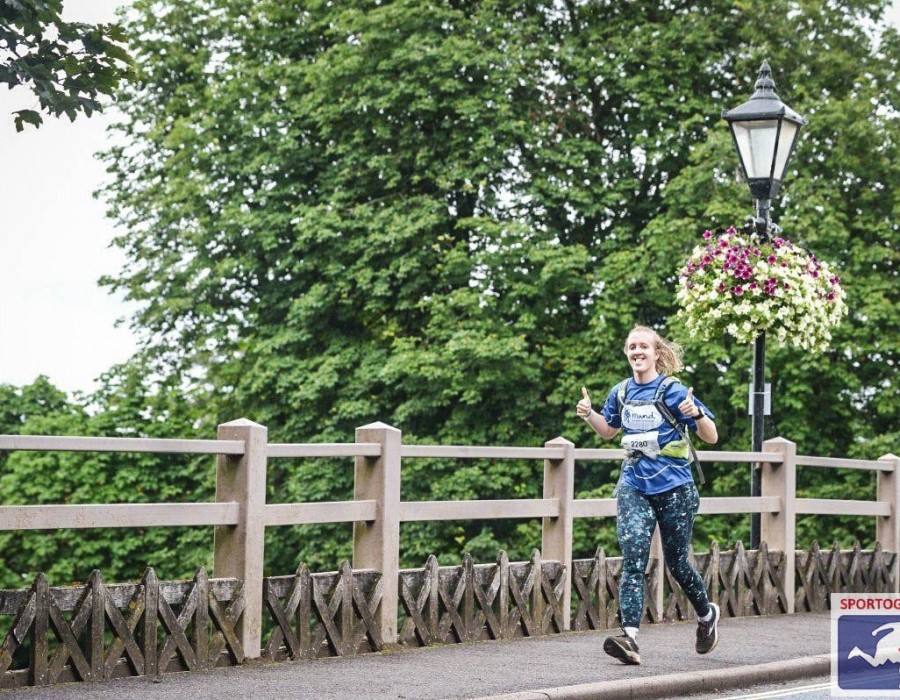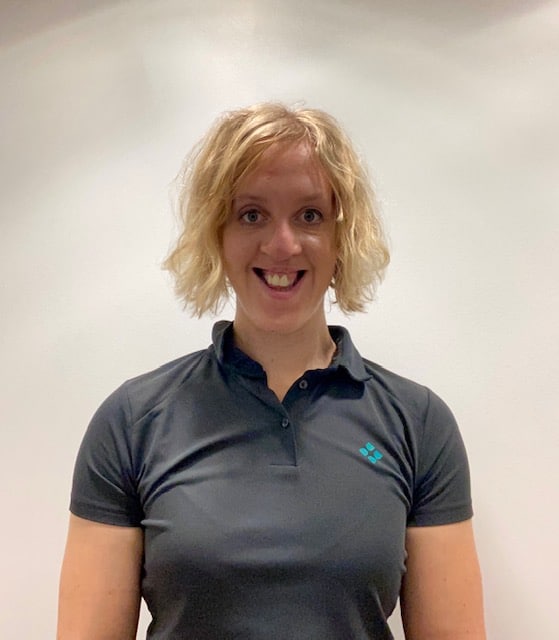Fitness and Performance
Training for an ultramarathon with Rebecca | part 3

Training for an ultramarathon takes guts. It requires an incredible amount of self-determination to accomplish something that many people would never dream of attempting. And if it’s your first ultramarathon, there’s a lot of things you’ll learn along the way. That’s why we’ve kept up with Bodyset RunFit Specialist, Rebecca Nygren over the last few months as she documented her ultramarathon training journey, detailing her learnings, tips and tricks to crossing the finish line.
On 11th July, Rebecca smashed her very first ultramarathon with the Threshold Trail Series 100km Race to the Stones in under 15 hours! Here’s what she had to say about race day prep and recovery…
After months of preparation, the day of my 100km ultramarathon finally arrived, and I can now proudly say that I completed it in 14 hours and 56 minutes. 1300 metres elevation gain, with every kind of terrain imaginable. It’s hard to put into words what it feels like. It was an emotional and physical rollercoaster.
Race day preparation
In the weeks before an ultramarathon race, it’s important to let your body recover. My last long run before the ultramarathon was 3 weeks before race day and during the final 2 weeks my longest run was just 15km. I made all the runs slow and kept walking throughout the week, to keep my feet used to the impact whilst still recovering. During this time, I felt more tired and achy than usual. This is because your body is in recovery mode, and healing any niggles and micro injuries. It’s really important to eat well, sleep well and drink plenty water as part of your muscle recovery plan. 2-3 days before race day I completed a slow 5km run and did a bit of walking. I also did some gentle hip mobility exercises, like a 90/90 hip stretch and Pigeon pose. This was because I usually feel hip tension during long runs. Focus on stretching the areas that you struggle with.
Ultramarathon race day
At 6.20am we set off as a group of 8, but as all our training had been different, we split up within the first 15km. Even if you’re in group, it’s best to stick to what you know – go at your own pace. And remember, everyone around you is feeling many of the things that you’re feeling – you’re all in it together!
I had already decided to run on the flat and downhill tracks and walk the uphill tracks. This worked for most of the race. After the halfway point it really is mind over matter. There will be moments when you don’t feel like you’re even moving. But then you find a bit of energy and keep going. I found it helpful to find distractions. I talked to people around me, I looked at the beautiful surroundings and thought about what I would eat at the next pit stop. Eating and drinking little and often throughout the race is really important. There will be times when you don’t feel like eating, but you need to! If not, your sugar levels will drop and you’ll hit a wall. During the race I had sweets, crisps, a ham sandwich, porridge (amazing!), peanuts and oranges. To drink I had 6-7 litres of water and 1 glass of flat coke.
Running on the flat was sore on my hip flexors, due to fatigue. Running downhill was sore on my quads and feet due to high impact. Walking uphill was sore on my lower back due to fatigue and the incline causing me to lean forward more. This is common for most runners, at any distance. I reduced the pain in these areas with my own strength programme in preparation for race day. Had I not done this, I could have been in a lot more pain on the day! If you’re training for a running race and experiencing any aches, pains or niggles, then booking in with a RunFit specialist could significantly reduce your risk of injury and improve your race day running performance.
After 90km it got dark outside, so I had to complete the last 1.5 hours with my head torch on. This was difficult as the terrain in the last 6km, was downhill and very uneven. When you’re this far along in a race, your control and proprioception will be reduced due to fatigue and pain. This along with the tunnel vision the torch creates, means you have to slow down and even walk. In the flatter areas, I tried to set myself small goals, like running for 3 minutes, then walking again. Finishing the race is hard to describe. You’re tired and in pain, yet in the last 300 metres you get a surge of energy that carries you across the line. Lots of friends and family were waiting at the end – the atmosphere was amazing. It is a memory that will stick with me forever!
Race recovery and maintenance
The state my body was in the next morning wasn’t pretty. It took me 5 minutes to get out of bed! My quads, hip flexors and lower back were seizing up all day. In the evening I decided to go for a walk – this was a great idea. It was hard but getting the circulation going and the joints and tendons moving after a race (no matter what distance), is key to speeding up your recovery. It took 48 hours to get back to walking normally again, and another 48 hours to walking down stairs well again (ouch).
To help my ultramarathon recovery, I kept moving and stretched little and often throughout the day. I also went to the gym and did some very light upper body exercises. Again, to help my muscles to start moving. I would say it took 7-10 days to feel back to normal. My first run was after 5 days, which was a very slow 8km. Hip flexors and quads were at 70% recovered at that point.
About 1.5 weeks after the race, I had some mild patellar pain. This was on the side where my quad muscle took slightly longer to recover. Most likely, this was caused by going from “boom to bust”. My body was used to all the impact from training and suddenly it had been largely reduced. I have since done some rehab and eased into loading, and I’m recovering well.
The main thing to do post race is listen to your body. You don’t have to run, but you do need to keeping moving. If you’re injured after your race, do book an appointment to see me or one of my colleagues.
Final thoughts
Reflecting after the race, I am very happy that I signed up for and completed my ultramarathon. It’s been a great experience and it was great to know what my body is capable of! I’m back to running shorter distances and doing a half marathon in October. We’ll see what next year brings…
